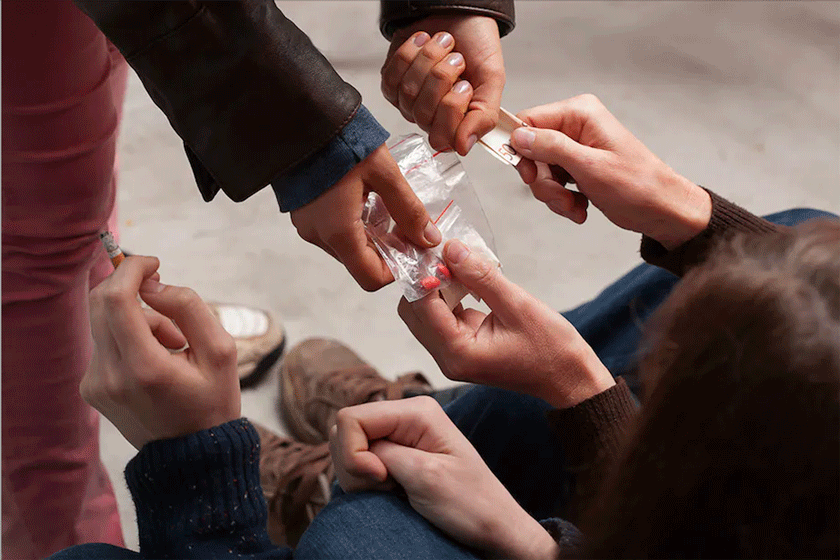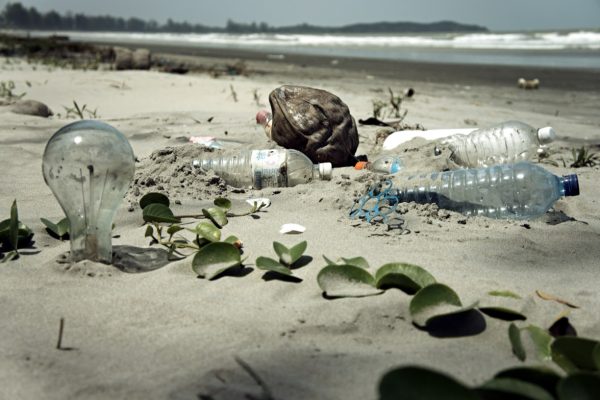The Stigma of Asking for Help
A deep dive into the teenage drug addiction problems.
We all know teenage drug use is a problem—even at a Catholic school. However, there is little conversation about what has caused this epidemic. Let’s talk about it.
My entire life I’ve heard the phrase “Stay in school and don’t do drugs.” Because everyone has heard this well-known saying, it seems to be an obvious fact that without a doubt, my peers would follow. Well, it’s not so obvious when your eyes have been opened to the harsh world.
Actions always have consequences, either good or bad. Teenagers often experiment with drugs because of peer pressure, curiosity, or self-medication. In those moments, teens may feel that the consequence is good because of the relief and gratification they feel from drugs. Yet society often fails to think about long-term effects.
Drugs alter natural brain chemicals. Substance abuse neurologically causes adolescents to experience memory problems, damage to neurotransmitters and the brain, and create a reduced ability to feel pleasure. So the first time a teenager decides to try using a substance, they may feel amazing and experience a high.
While a person might feel incredible compared to their normal state of mind, it is forgotten that there is such a disappointing return to reality after the effects of that drug wears off. Once someone has experienced a high, a person can only help but have the urge to feel like that. This is where that urge becomes dangerous and results in substance addiction.
When the topic of homelessness is brought up, we as a society often blame homeless people for being “crazy” because “all they want is drugs.” Well, that can start from early adolescent years and last the person’s full lifetime. People usually don’t think about teenagers that have substance addictions. Our youth often doesn’t get offered help from the guidance in our lives: parents, teachers, counselors, and coaches. While I do want to acknowledge those adult leaders who offer and give help to teenagers, there is still much more work that needs to be done.
This all starts with conversations in homes and classrooms. There is such a big stigma around drugs that it prevents students and even adults from reaching out to get help. Their addictions can become much more severe because as time goes on, the addiction will become stronger and it is much harder to quit. Conversations purely have to address the dangers of drugs and provide alternatives to help with personal problems rather than drugs.
Another large part to prevent drugs is to stop advertisements. From personal experience, many TV channels air children’s cartoons and shows with commercials for prescription drugs and different vapes or cigarettes. Besides the fact that commercials for pharmaceutical drugs are annoying, they are not common in other countries.
With a Brazilian mother who works in marketing, when my family watches TV my mom complains every time she sees a commercial for a new drug or a pharmaceutical company. She explains that it is simply stupid and illegal in all other countries in the world, aside from the United States and New Zealand.
These commercials always end with important information printed in the smallest font you have ever seen at the bottom of a screen and with a person speaking extremely fast, telling the audience to ask their doctors before using anything. Medical professionals are educated to specifically prescribe and help their patients. This is all applicable because it is known that teens can have addictions from prescription drugs. According to a study done by the University of Michigan, “The most common sources for prescription drugs for 12-to-17-year-olds were getting them free from friends and relatives, physician prescriptions for opioids, and buying stimulants and tranquilizers illegally.” The national average for a substance use disorder in teenagers is 5%.
Based on a study done by the National Center for Drug Abuse Statistics, teenagers in California are “24.46% more likely to have used drugs in the last month than the average American teen.” Fifty percent of all teenagers in the United States have misused a drug a least once in their life. Out of the estimated 42 million teenagers in the United States, about 5.25 million have been abusing an illegal substance for the past year.
So what can the adults in our lives do to help us? Teachers can be educated on what to look for when a student has an addiction. Some signs in a classroom that a teenager has been using drugs include red eyes, slurred speech, lack of hygiene, change in social life, clumsy, withdrawal from school, and a lack of motivation to do any work.
The best thing a teacher can do is to be supportive. As advice from a student who is mainly afraid of breaking any rules, starting with a supportive and helpful place of mind can result in the opposite rather than starting with a punishment. Asking the student questions and giving them a voice is a great start. It is the invitation to help that will often aid a student in opening up and discussing their personal situation.
In a study done at Arizona State University by Dr. Suniya Luthar, a foundation professor of psychology, she wrote that American teenagers who are privileged or get a private education are more likely to have addiction just out of high school. So, this puts us, Notre Dame High School students, at risk.
So why is all this information a random 15 year old telling you relevant? Because we should all be educated on problems in our society so that we can try and stop them. Drug addictions can be life altering. Our community should be taught how to make informed decisions by teaching each other the unseen side of different drug problems. That way, when the time comes for anyone to make a decision, they will know and be confident in what they are doing.






